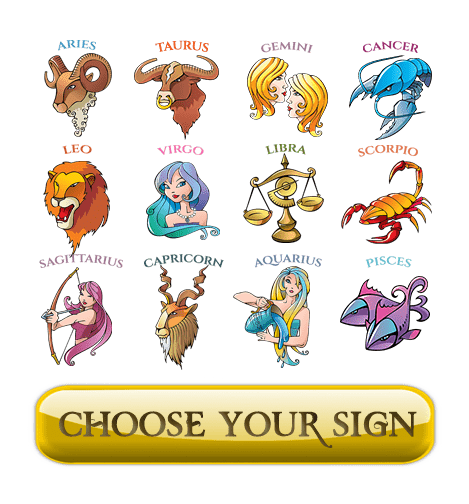Understanding Back Pain
Back pain is one of the most common ailments affecting people worldwide, with millions suffering from various degrees of discomfort daily. It can range from a dull, constant ache to a sudden, sharp pain that makes movement nearly impossible. While back pain is often temporary and resolves on its own, it can also become chronic,…
Back pain is one of the most common ailments affecting people worldwide, with millions suffering from various degrees of discomfort daily. It can range from a dull, constant ache to a sudden, sharp pain that makes movement nearly impossible. While back pain is often temporary and resolves on its own, it can also become chronic, impacting quality of life and daily activities. Understanding back pain, its causes, and ways to alleviate it is crucial for maintaining overall health and well-being.

What is Back Pain?
Back pain refers to discomfort or pain felt in the back, which can be caused by a variety of factors ranging from muscular strain to structural problems. It is typically classified into two main types: acute back pain, which lasts for a few days to weeks, and chronic back pain, which persists for 12 weeks or longer. This pain can affect different areas, including the lower back, middle back, or upper back, each with distinct characteristics and causes.
Causes of Back Pain
Back pain is often the result of complex interactions between muscles, ligaments, nerves, and spinal structures. The most common causes include:
- Muscle Strain and Injury: Sudden movements, lifting heavy objects improperly, or overstretching can strain muscles and ligaments in the back, leading to acute pain.
- Poor Posture: Prolonged periods of sitting or standing with improper posture can gradually wear down the spine’s structures, resulting in chronic discomfort.
- Herniated or Bulging Discs: The spinal discs can herniate or bulge, pressing against nearby nerves and causing pain, numbness, or weakness.
- Arthritis and Degenerative Conditions: Conditions like osteoarthritis and degenerative disc disease cause inflammation and wear down the cartilage in the spine, leading to persistent pain.
- Medical Conditions: Scoliosis, spinal stenosis, fibromyalgia, and osteoporosis are other medical conditions that can contribute to back pain.

Types of Back Pain
Understanding the specific type of back pain can help in its effective management. The three primary types are:
- Lower Back Pain: The most common type, affecting the lumbar region, often due to heavy lifting, improper posture, or sedentary lifestyles.
- Middle Back Pain: Occurs less frequently and may result from poor posture, muscle strain, or underlying conditions such as a herniated disc.
- Upper Back Pain: Often related to muscular irritation or joint problems, sometimes linked to poor ergonomics or trauma.
Muscle Strain and Injury
Muscle strains occur when muscles or tendons in the back are stretched or torn. These injuries often result from heavy lifting, sudden movements, or overuse. Sports injuries, accidents, or even sudden awkward movements can cause a strain. Symptoms include muscle spasms, limited range of motion, and pain that worsens with activity or movement.
The Role of Poor Posture
Poor posture is one of the most overlooked yet significant contributors to back pain. Slouching, sitting in an improper position, or hunching over a desk for prolonged periods places undue stress on the spine and its supporting muscles. Over time, this leads to muscular imbalances, spinal misalignment, and pain.
Maintaining good posture—standing upright, shoulders back, and head aligned with the spine—can alleviate much of the discomfort associated with poor postural habits. Ergonomic adjustments in work and home environments can also prevent back pain caused by prolonged poor posture.
Herniated or Bulging Discs
A herniated disc, also known as a slipped or ruptured disc, occurs when the soft center of a spinal disc pushes through a crack in the tougher exterior casing. This condition can irritate nearby nerves, resulting in pain, numbness, or weakness in the back and legs. Factors contributing to disc herniation include age, wear and tear, improper lifting techniques, and traumatic injury.
Arthritis and Degenerative Conditions
Arthritis and degenerative disc disease are common causes of chronic back pain. Osteoarthritis, in particular, causes the protective cartilage that cushions the bones in the spine to deteriorate. This degeneration leads to painful bone-on-bone contact and inflammation. Similarly, degenerative disc disease involves the gradual wearing down of the spinal discs, which lose their ability to absorb shocks effectively, leading to pain and reduced mobility.
Other Medical Conditions

Several other medical conditions can cause or contribute to back pain:
- Scoliosis: A curvature of the spine that can lead to uneven distribution of weight and stress on the back muscles.
- Spinal Stenosis: A narrowing of the spinal canal that puts pressure on the nerves, causing pain, numbness, or weakness.
- Fibromyalgia: A condition characterized by widespread musculoskeletal pain, including in the back.
- Osteoporosis: A condition that weakens bones, making them more prone to fractures, including compression fractures in the spine.
Risk Factors for Back Pain
Certain factors increase the risk of developing back pain:
- Age: Back pain becomes more common as people age, particularly after age 30 or 40.
- Weight: Excess body weight can strain the back muscles and spine.
- Lack of Exercise: Weak, unused muscles in the back and abdomen may lead to back pain.
- Occupational Hazards: Jobs that require heavy lifting, bending, or twisting increase the risk of back injuries.
Symptoms of Back Pain
Symptoms of back pain can vary widely, from a sharp stabbing sensation to a dull ache. Common symptoms include:
- Localized Pain: Pain confined to a specific area of the back.
- Radiating Pain: Pain that travels from the back to other areas, such as down the leg.
- Stiffness: Difficulty moving or bending, particularly after long periods of rest or inactivity.
- Muscle Spasms: Involuntary muscle contractions that cause significant discomfort.
When to See a Doctor?
It’s crucial to seek medical advice if back pain persists for more than a few weeks, worsens over time, or is accompanied by symptoms such as:
- Numbness or tingling
- Weakness in the legs
- Unintended weight loss
- Fever
- Difficulty urinating or bowel control problems
Diagnosing Back Pain

Diagnosing back pain involves a comprehensive assessment of the patient’s medical history and a physical examination. Diagnostic tests like X-rays, MRI scans, CT scans, and nerve conduction studies may be used to identify the cause of the pain.
Conservative Treatments for Back Pain
Most back pain can be effectively managed through conservative treatments, including:
- Medications: Over-the-counter pain relievers such as ibuprofen, naproxen, or acetaminophen can help reduce pain and inflammation.
- Physical Therapy: Exercises designed to strengthen the muscles supporting the spine, improve posture, and enhance flexibility.
- Heat and Cold Therapy: Applying heat or cold packs can reduce inflammation and ease muscle spasms.
- Chiropractic Care: Spinal manipulation performed by a chiropractor may help relieve pain and improve function.
FAQs About Back Pain
How long does it take for back pain to go away?
- Back pain can last anywhere from a few days to several weeks, depending on its cause and treatment.
What are the best exercises for back pain relief?
- Low-impact aerobic activities, stretching, and strength training exercises are generally recommended.
Is surgery necessary for back pain?
- Surgery is usually considered only when conservative treatments fail, and there is evidence of nerve compression or other structural issues.
Can back pain be a sign of something serious?
- Yes, in rare cases, back pain can be a symptom of a serious medical condition like a tumor, infection, or cauda equina syndrome.
What lifestyle changes can help prevent back pain?
- Regular exercise, maintaining a healthy weight, practicing good posture, and avoiding smoking can help.
Does diet affect back pain?
- Yes, a diet rich in anti-inflammatory foods, adequate hydration, and maintaining a healthy weight can positively affect back pain.

Conclusion
Back pain is a prevalent issue that affects people of all ages, and understanding its causes and treatment options is key to finding relief. Whether it’s caused by poor posture, a herniated disc, or a degenerative condition, there are multiple ways to manage and alleviate discomfort. With a combination of conservative treatments, lifestyle changes, and medical interventions, it is possible to live a healthier, pain-free life.




